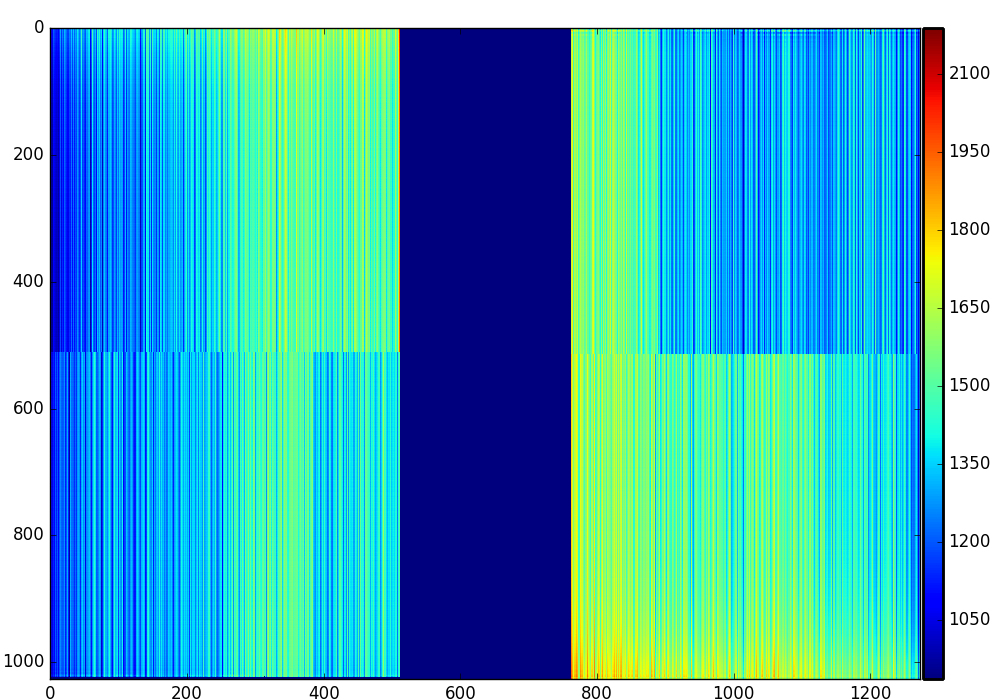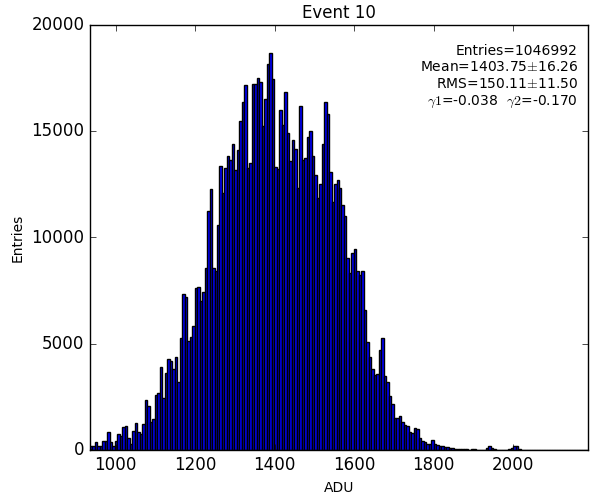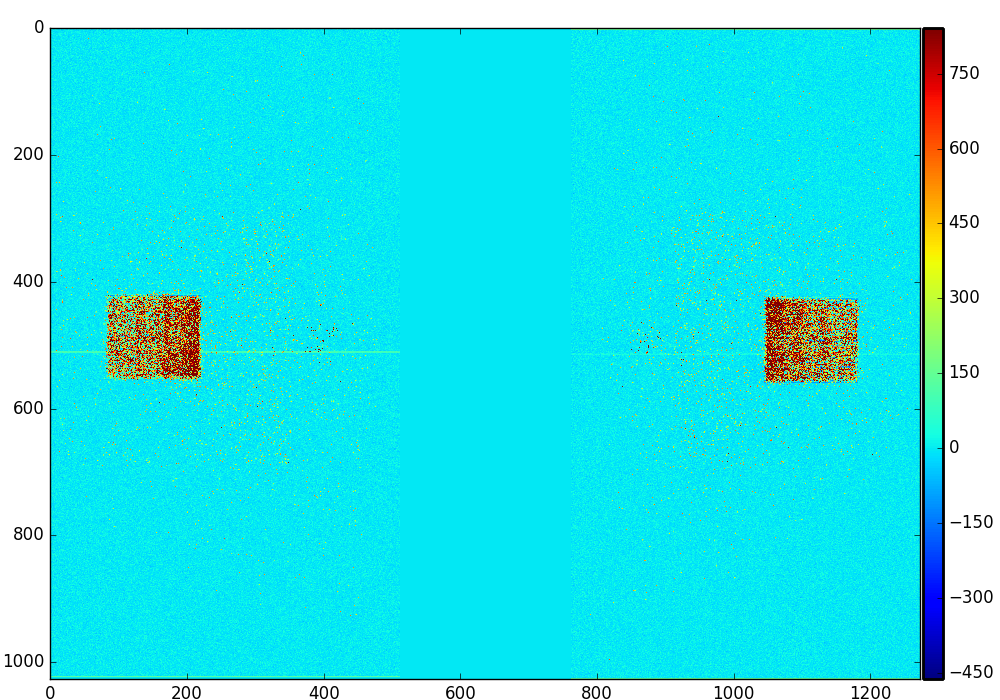Page History
...
- exp=sxrx22915:run=104
- Camp.0:pnCCD.1
- /reg/d/psdm/sxr/sxrx22915/calib/PNCCD::CalibV1/Camp.0:pnCCD.1/
- all plots for event 10
Raw image
Mask
mask = det.mask(evt, calib=True, status=True)
returns a combination of masks
- /reg/d/psdm/sxr/sxrx22915/calib/PNCCD::CalibV1/Camp.0:pnCCD.1/pixel_status/103-end.data
- /reg/d/psdm/sxr/sxrx22915/calib/PNCCD::CalibV1/Camp.0:pnCCD.1/pixel_mask/0-end.data
Pedestals
Gain
Corrected data
...
Standard Detector correction (128 in rows)
raw - pedestal cm in rows(128) and columns (512) using mask for square regions
Last version of common mode correction for pnccd
- Bill requested to correct all pixels.
- For each group of pixels common mode is evaluated using pixels defined by mask (1), then applied to all pixels in the group.
Best pnccd image correction algorithm for sxrx22915
- raw data - pedestal
- apply gain factor
- apply common mode correction in rows (128 pixel), mode=1
- apply common mode correction in columns (512 pixel), mode=4
- apply mask from status (bad pixels only)
Summary
- Image for raw data has horizontal and vertical stripes
- pedestals and gain, averaged for many images (common mode is averaged to zero), have vertical strips ONLY!
- So, common mode effect gives strong contribution in rows (horizantal strips)
- Median algorithms gives bands in image depending on regions of image brightness
- Algorithm properly accounting masked pixel regions with large signal removes image artifacts.
References
...
Overview
Content Tools











